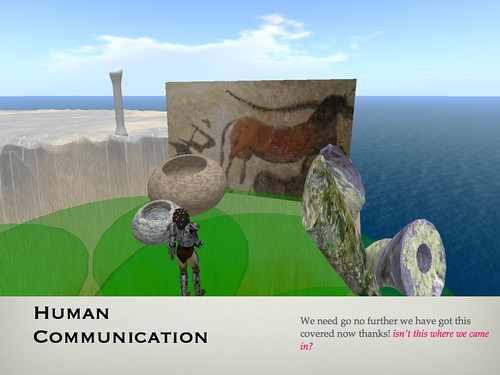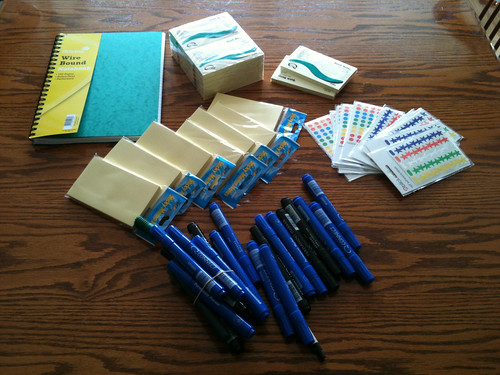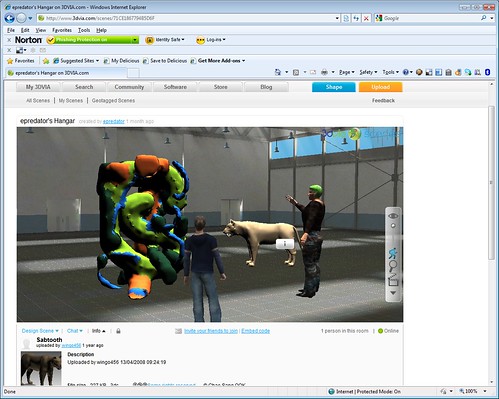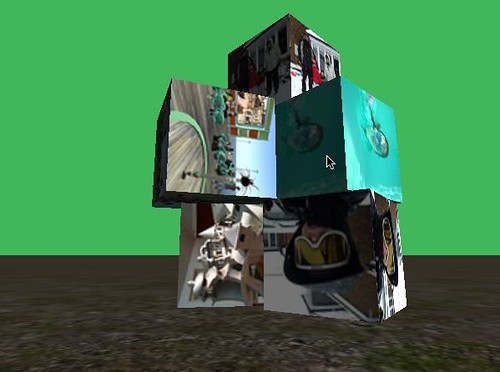This weekend on prime time BBC2 TV saw the first part of the four part documentary “The Virtual Revolution”. It is hosted by Dr Aleks Krotoski know to many of the metarati out there for studies into Social Influence in places like Second Life, and also the living the rock and roll with Jim “Babbage Linden” Purbrick and Max Williams in the band 100 Robots. Many people will have followed the #phdhell that Aleks has been tweeting about too. Also the twitter stream has been full of the production of this programme.
All this leads to the fact that it was a much watch piece of TV. I tweeted early on “This is what we have the BBC for” because it was a very well made, not too geeky and well thought out exploration of “The Great Levelling”. Many notable shapers of the web we know today featured in interviews. It will hopefully be seen by many people who seem to assume the web and social interaction and sharing of information is some how a bad thing. It isn’t. It has arrived and we have changed many of the the things we do and enhanced others by engaging with one another.

I should add that whilst the programme covers the past 20 years it should be clear to us all that we have come a long way and still have a long way to go in human communication online. It starts by embracing what we have now, to engage and explore all the possibilities. (Yes that includes virtual worlds like Second Life!). However don’t assume we have the perfect solutions yet. There is more to come than avatars, islands, Facebook friends, blogs and twitter. An underlying social change is happening though.
To quote Stephen Fry in one of the many pieces of video available on the Virtual Revolution website “we are, constantly in need of, of connecting with people for, friendship, love, sex, knowledge, growth, enmity, territoriality all the, all the imperatives that drive us as human beings. Erm we’ve created villages and towns to help us do that and roads and now we’ve created something else that allows us to do it, us to do it even more. ”
For a slightly more reactionary piece there is always John Perry Barlow on freedom of expression (who I nodded in agreement a lot with)
“I wrote a piece for Wired Magazine in, in ’93 which they called The Economy of Ideas. And I recognised that the only reason that copyright had worked was because it was hard to make a book. And that suddenly anything that a human being could do with his or her mind would be infinitely reproducible at zero cost and infinitely distributable. And given that there is a fundamental quality in human nature that likes to share information. I mean if you think something is, is cool or interesting what’s the first thing you want to do with it? Tell everybody you like. You know, and if, and if it’s not just simply saying I read this great book you should go out and buy it but you can just sort of zap the book right in to the other persons mind practically, you’re gong to do that. And you’re not going to have much regard for, for copyright. Er, and so the powers that had been suddenly saw copyright as being a splendid way to control this scary new liberty. Er, that exerting powerful controls on owned word would be the, would be the real method of clamping down on this, this thing.”
One interesting thing that happened on the starting titles, and helped the twitter buzz was seeing on screen the hash tag for #bbcrevolution. It was just placed bottom right of the screen. For many people this will seem alien, “thats not a URL”. Whilst the general public, non tech geeks, have got very used (in the past few years) to seeing a web site URL they will not have seen the meta URL that is a hashtag. The #andsometext notation is used to lift a tag or label a piece of conversation as being relevant to a subject. It is platform agnostic, you can hashtag anywhere, its just text. It means searches can find threads of conversation across disparate sources. It is not organised, controlled nor policed. It just is. To see it on a documentary that has been create through many online collaborative efforts, putting its money where it mouth is is another indication of the validity of the programme.








